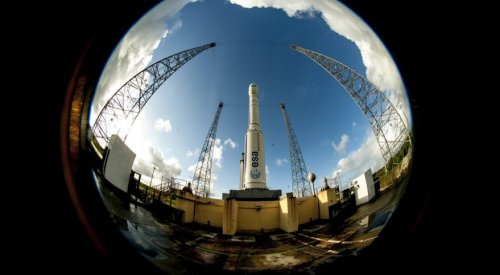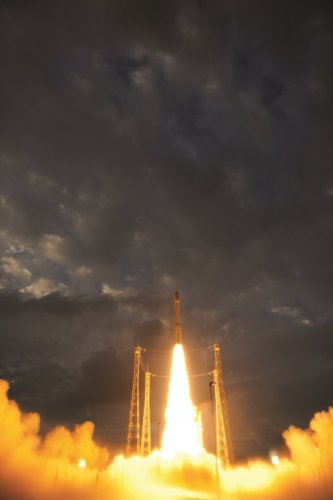Although the mostly Italian Vega rocket was added to the Arianespace family in 2012, it’s only recently achieved tangible success in wooing the smallest spacecraft operators.
The reasons are twofold. First, Vega is about to get an adapter that can fit cubesats and microsats up to 400 kilograms inside the rocket’s payload fairing. The second is lower prices.
This year, Arianespace signed four customers for the first flight the new adapter, the Small Spacecraft Mission System, or SMSS.
The customers — U.S. smallsat launch aggregator Spaceflight Inc., Dutch satellite builder Innovative Solutions in Space, Italian satellite builder Sitael and Italian startup D-Orbit — are due to launch on SSMS’s maiden flight in the first half of 2019.
The European Space Agency has been working on the SSMS adapter since 2016, alongside Vega manufacturer Avio of Colleferro, Italy, with the goal of making the rocket more competitive. Most smallsats of the SSMS-class launch dozens at a time on India’s Polar Satellite Launch Vehicle, or hitch a ride on International Space Station cargo runs for eventual deployment through the station’s special airlock.
SSMS is a modular system, and doesn’t have to fill the entire payload fairing, according to Avio. Vega can launch with a smaller SSMS along with a primary payload, allowing flexibility on launch timing.
Arianespace has not publicly disclosed how much it charges for Vega missions, but Spaceflight President Curt Blake told SpaceNews in April that newfound attractive pricing convinced the company to contract with Arianespace for the first time ever.
Avio hopes to perform one or two SSMS launches annually as part of Vega and, eventually, Vega C. The increased production of P120C boosters — up to 35 annually for both Vega C and the strap-on boosters of Ariane 6 — will provide scale meaningful enough to drive prices lower, according to Arianespace and Avio officials.
Similarly to the Ariane family, Vega’s evolution does not end at Vega C. Last November, ESA put 53 million euros toward Vega E, a subsequent generation of the rocket with three stages instead of four, including a more versatile upper stage.
Daniel Neuenschwander, ESA’s director of space transportation, said his interest in more advanced upper-stage technology is not limited to Ariane 6.
“My intention is to go to the next ministerial council with a proposal on competitiveness increases on the upper stages of both Ariane and Vega,” he said.
Upper stages are increasingly important for satellite constellation operators who want their spacecraft dropped off in multiple orbits from the same launch vehicle. Vega can already send spacecraft into different orbits, but will be able to reach a wider range with a more advanced upper stage. Ariane 6 will feature a restartable upper stage to better address the needs of smallsat constellations.
This article originally appeared in the July 30, 2018 issue of SpaceNews magazine
- Why Sierra Nevada’s owners are betting big on Dream Chaser
- #SpaceForce takes Capitol Hill by storm • What is the true cost of space programs? • Space budget deep dive
- LEO and MEO broadband constellations mega source of consternation
- Avio expanding Vega launch abilities, mulls “light” mini-variant
- SpaceX takes top honors in SpaceNews Awards for Excellence & Innovation
Share with your friends


(0) Comments
This article comments are currently no :(